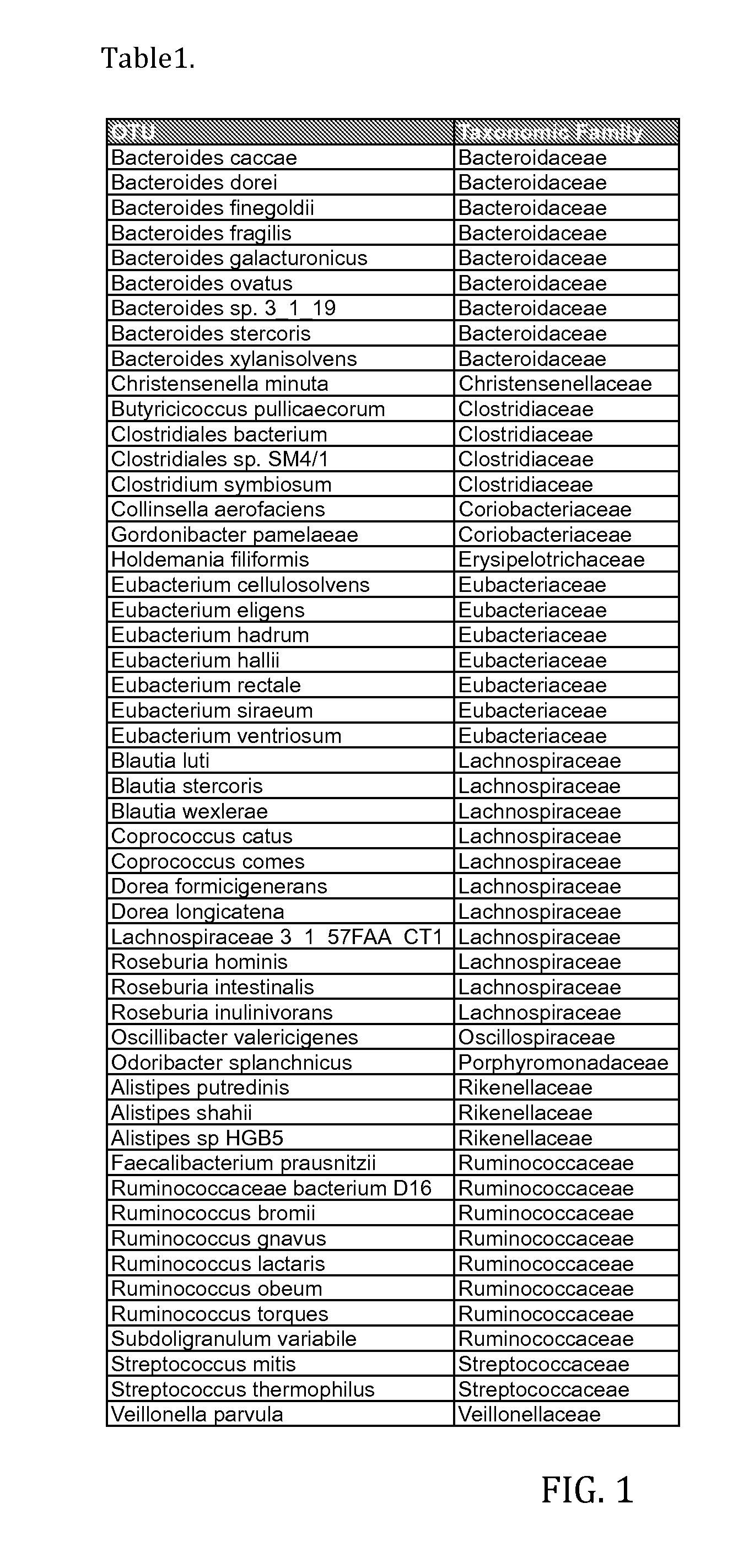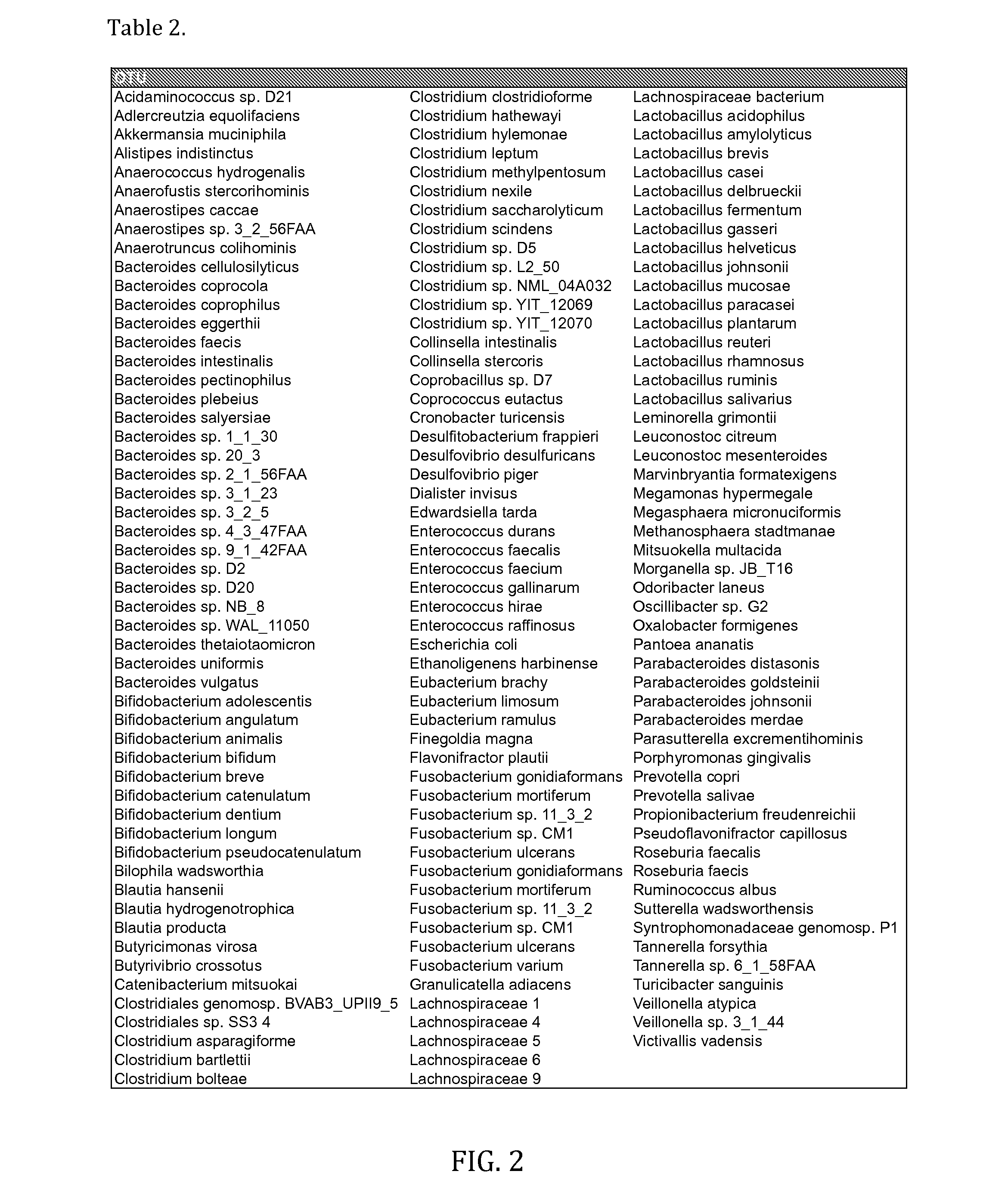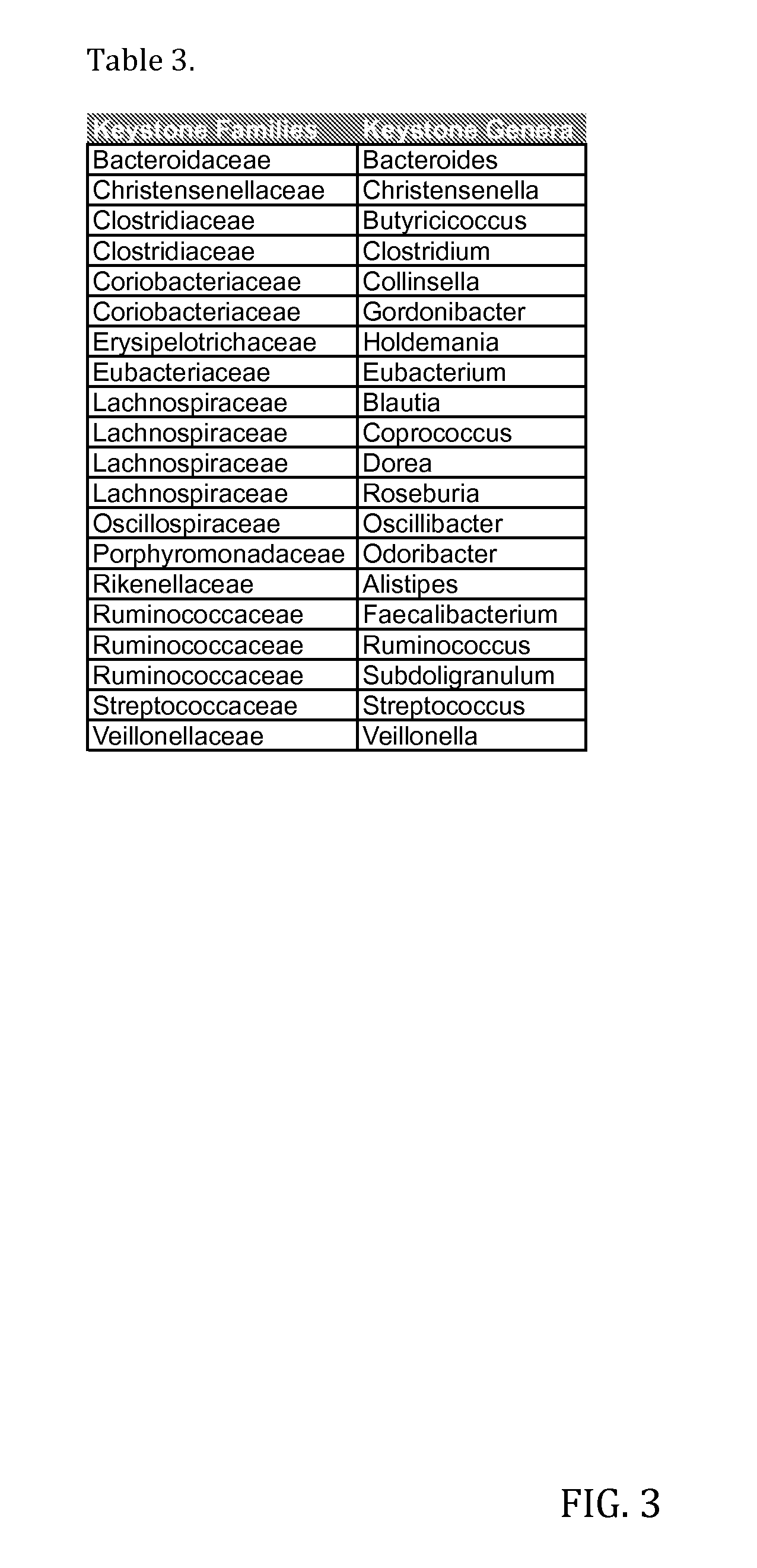Bacterial Compositions and Methods of Use Thereof for Treatment of Immune System Disorders
- Summary
- Abstract
- Description
- Claims
- Application Information
AI Technical Summary
Benefits of technology
Problems solved by technology
Method used
Image
Examples
example 1
Oral Food Allergy Models in Brown-Norway Rats With and Without Adjuvant
[0100]Food allergies are an aberrant, IgE-mediated hypersensitivity reaction to food macromolecules or partially digested components thereof. The allergic reaction develops in a two-phase process in which the immune system is first sensitized to an allergen and then a reaction is elicited when the immune system is subsequently challenged by the allergen. Sensitization initiates the production of IgE antibodies, which ultimately attach to mast cells. In the challenge phase, allergen interacts with IgE antibodies resulting in release of cytokines and histamine. The allergen model induces a hypersensitivity reaction unaided by adjuvants or other agents that cause immune activation. Methods to test allergens without adjuvants in rat models involve breeding animals raised on feed lacking the allergen to be tested, e.g., peanut or soy, for three or more generations. Subsequent introduction of the allergen, e.g., via co...
example 2
Oral Food Allergy With Peanut Extract In Murine Models
[0105]Murine models are commonly sensitized to food allergens for the examination of prophylactic, curative treatments and desensitization protocols (Bashir et al., 2004, Li et al., 2000). These models sensitize animals and subsequently challenge them with an allergen monitoring both clinical symptoms of anaphylaxis and biomarkers of hypersensitivity in the form of increased PE-specific IgE and proinflammatory cytokines To test the therapeutic effect of the bacterial composition, five-week-old C3H / HeJ, female mice are raised on allergen-free chow under pathogen-free conditions. C3H / HeJ mice have a mutant TLR-4 gene making them hypersensitive to food allergens and subsequent sensitization procedures. Mice are sensitized to an allergen, e.g., peanut extract (PE) or purified Ara h1 (as described in Bashir et al. 2004, supra), by weekly oral administration of 1-10 mg allergen with 20 μg of cholera toxin (CT) for five weeks followed b...
example 3
In Vivo Assays Establishing Protective Effect of Bacterial Compositions From OVA Food Allergy
[0106]BALB / c ILraF709, 8-12 week old, female mice are sensitized to chicken egg ovalbumin (OVA) with a 100-200 μg intragastric dose of OVA with (optional) 10 μg staphylococcal enterotoxin B (SEB) once a week for 8 weeks. Mice are tested for allergic protection against anaphylaxis by a treatment protocol with and without inclusion of the bacterial composition explained in the following protocol. The test group receives a 7-day treatment with 5 to 7 antibiotics (including kanamycin, colistin, gentamycin, metronidazole and vancomycin and optionally including ampicillin and ciprofloxacin) delivered via their drinking water, followed by a single dose with Clindamycin on day 5th day of that week. The control group receives regular sterile water. Both groups are then challenged with 5 μg or 150 μg of OVA and are examined for anaphylaxis reaction via body temperature checked every 5 minutes and symp...
PUM
| Property | Measurement | Unit |
|---|---|---|
| Hypersensitivity | aaaaa | aaaaa |
Abstract
Description
Claims
Application Information
 Login to View More
Login to View More - R&D
- Intellectual Property
- Life Sciences
- Materials
- Tech Scout
- Unparalleled Data Quality
- Higher Quality Content
- 60% Fewer Hallucinations
Browse by: Latest US Patents, China's latest patents, Technical Efficacy Thesaurus, Application Domain, Technology Topic, Popular Technical Reports.
© 2025 PatSnap. All rights reserved.Legal|Privacy policy|Modern Slavery Act Transparency Statement|Sitemap|About US| Contact US: help@patsnap.com



